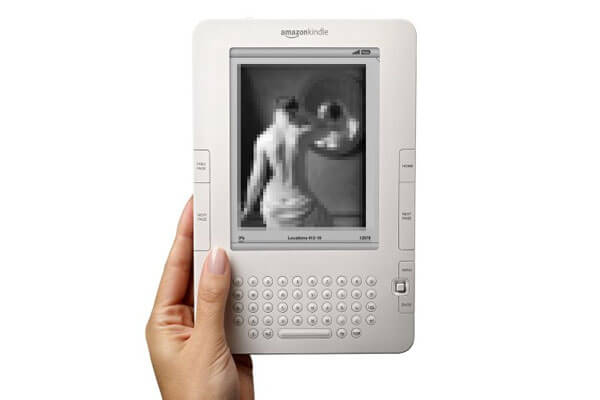E-books may be efficient, but they have no sex appeal
Darryl WhetterWebsite

In the documentary Helvetica, incensed graphic designer Michael Bierut hilariously critiques ads from old copies of Life Magazine. He attacks the verbosity and shrill insistence of early 1950s Coke ads prior to the introduction of Helvetica then flips admiringly to a minimalist ad set in the new font. Here again is a reminder of how design and material delivery can influence the content of a message. Just as I’m not likely to meet many wedding invitations written in a ransom-note font, I can’t imagine reading a romantic novel on an e-book.
Given both historical precedent and the exponential rate of media evolution, eventually I will do much of my reading on some kind of e-reader. Novels didn’t exist without industrialization (i.e., the printing press). With the hindsight of history, it’s easy for us to dismiss as naive the seventeenth-century book collectors who vowed never to own that cheap, ghastly and faddish new thing—the printed book. Today, newspapers already feel so last century, with their slaughter of trees for a day’s worth of programming which is pushed at crowds indiscriminately, not pulled selectively by readers. But then here I am, preferring my tales of head and heart on paper, not any kind of screen. If I can see the relationship between literacy and democracy with the technological shift from handwritten to printed books, what holds me back from doing the same with digitization, that next step in media evolution?
The answer lies in the nature of the novel itself.
Medieval literature was laboriously copied by hand. With this material preference for brevity, the author of medieval literature worked long before the writing advice “Show; don’t tell.” Medieval quests were written with bald declarations like, “He was very afraid.” Harold Bloom’s Shakespeare: The Invention of the Human goes so far as to say that a few centuries after the medieval romance, Shakespeare essentially invented the three-dimensional character. With their self-investigative soliloquies and their observation by an audience, if not other characters, Shakespeare’s characters are formed within their stories, not before them. (I know, I know: here come the parchment-and-quill hate mail from the medievalists). But these were plays: as with today’s noisy, ad-saturated cinema, you had to see them in a crowd, and on their schedule, not yours.
The novel—which you can read on your own schedule—is the child of poetry and drama, and like most children it displays inherited traits from both parents. Like the hand-copied medieval manuscript, the novel is read in private, not viewed in public like a play. But the novel also carries the play’s gene for evolving action and characters-in-flux. In The Art of the Novel, Milan Kundera admits, “As soon as you create an imaginary being, a character, you are automatically confronted by the question: What is the self? How can the self be grasped?
It’s one of those fundamental questions on which the novel, as novel, is based.” In love stories like Mordecai Richler’s Barney’s Version or Haruki Murakami’s Norwegian Wood or Michael Ondaatje’s The English Patient, characters find out who they are— and are simultaneously revealed to the reader—as they find out who they love. If that’s the content I’m looking for, I want the nakedness, tactility and privacy of a paper book, not the proprietariness and gadgetry of an e-reader.
There’s a tactile nakedness and independence to the book well-suited to the expansions and confessions I want from literature. I still have the copy of Louis de Bernières’s Captain Corelli’s Mandolin that I read a decade ago on the Greek island of Cephallonia, where the novel is set. I’d rather pass a romantic partner that copy, not an e-file.
After all, for the past 400 years, literature has combined abstract words with the subtle physicality of paper books. That subtlety presents a challenge. In From Where You Dream: The Process of Writing Fiction, American fiction writer and creative writing professor Robert Olen Butler notes that literature is unique amongst the arts for not being inherently sensuous. Abstract and symbolic writing does not have the emphatic physicality of theatre, visual art or music. Books have to make the most of what they’ve got: If a romantic novel and I are going to undress each other, I want to feel each page unfurl. And I want to be able to read it in the bath.